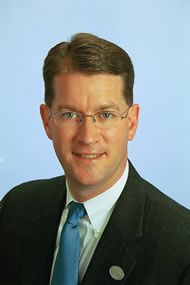Can the New Shingles Vaccine Attract More Takers?
The availability of a better shingles vaccine may attract more people to be vaccinated.
In the decade since the first shingles vaccine was introduced in the United States, uptake has been steady but slow, reaching 30% of adults aged 60 and older in 2015. Now that a second, more effective vaccine has hit the market, health-care officials are optimistic that more people will opt in. Pharmacists are uniquely positioned to see that they do choose to be vaccinated.
Shingles (herpes zoster) is caused by the varicella zoster virus that also causes chickenpox. According to the CDC, one out of three Americans 60 years or older – about one million every year – will develop shingles along with potentially serious complications like postherpetic neuralgia.
Since 2006, the one vaccine for preventing shingles has been Merck’s Zostavax®, but it is only about 50% effective. In October 2017, the FDA licensed Shingrix from GlaxoSmithKline, for adults aged 50 years and older. The CDC’s Advisory Committee on Immunization Practices (ACIP) recommended Shingrix over Zostavax for the same age group after clinical trials showed a sustained efficacy rate of more than 90%.
However, Shingrix faces a few stumbling blocks in the marketplace, beginning with cost (expected to be $280) and insurance coverage. “This is an expensive vaccine in terms of out-of-pocket costs for patients, and it also can be somewhat complicated from a reimbursement of providers’ perspective,” notes Kathleen Dooling, MD, MPH, Medical Officer, Division of Viral Diseases at the CDC. Since the vaccine is covered under Medicare Part D, it will be much more straightforward for pharmacists to get reimbursed, she added. Medicaid coverage will vary from state to state.
Another big issue is the misinformation about vaccines in general that exists within the target population. “There are still people who come into our pharmacy and say, ‘I’m not going to get a flu shot because it causes the flu,’”

Jonathan Marquess, PharmDJonathan Marquess, PharmD, CDE, an independent pharmacist in Georgia, told Drug Topics. He urges pharmacists to become part of the “immunization neighborhood” and educate their customers about all the vaccines that they need, including shingles, flu, and pneumonia. “What I will say to patients is, ‘I would hate to know that you left my pharmacy and actually came down with one of these diseases and I knew I had a protection in my refrigerator or freezer that could help you.’”
For now, the only way someone can prevent shingles once exposed to the varicella zoster virus is to be vaccinated. However, Dooling foresees a day when the combined forces of the highly effective chickenpox vaccine for the younger generation and the Shingrix vaccine for their parents and grandparents could eradicate both conditions.
“The effect of a cohort of people who are now coming into adulthood who have been vaccinated with the varicella vaccine are really going to change the epidemiology of shingles, and in ways that are difficult to predict. This will be an important area for us to study in the future,” she concluded.